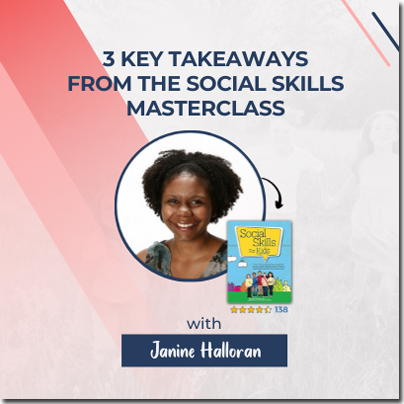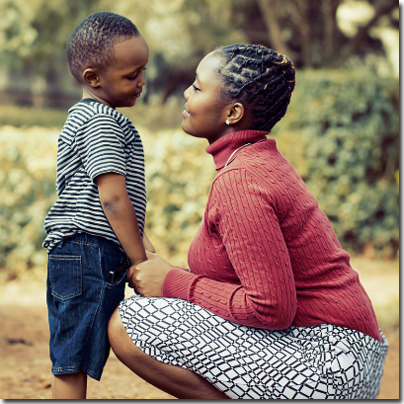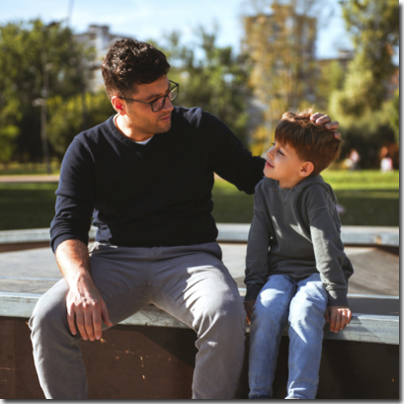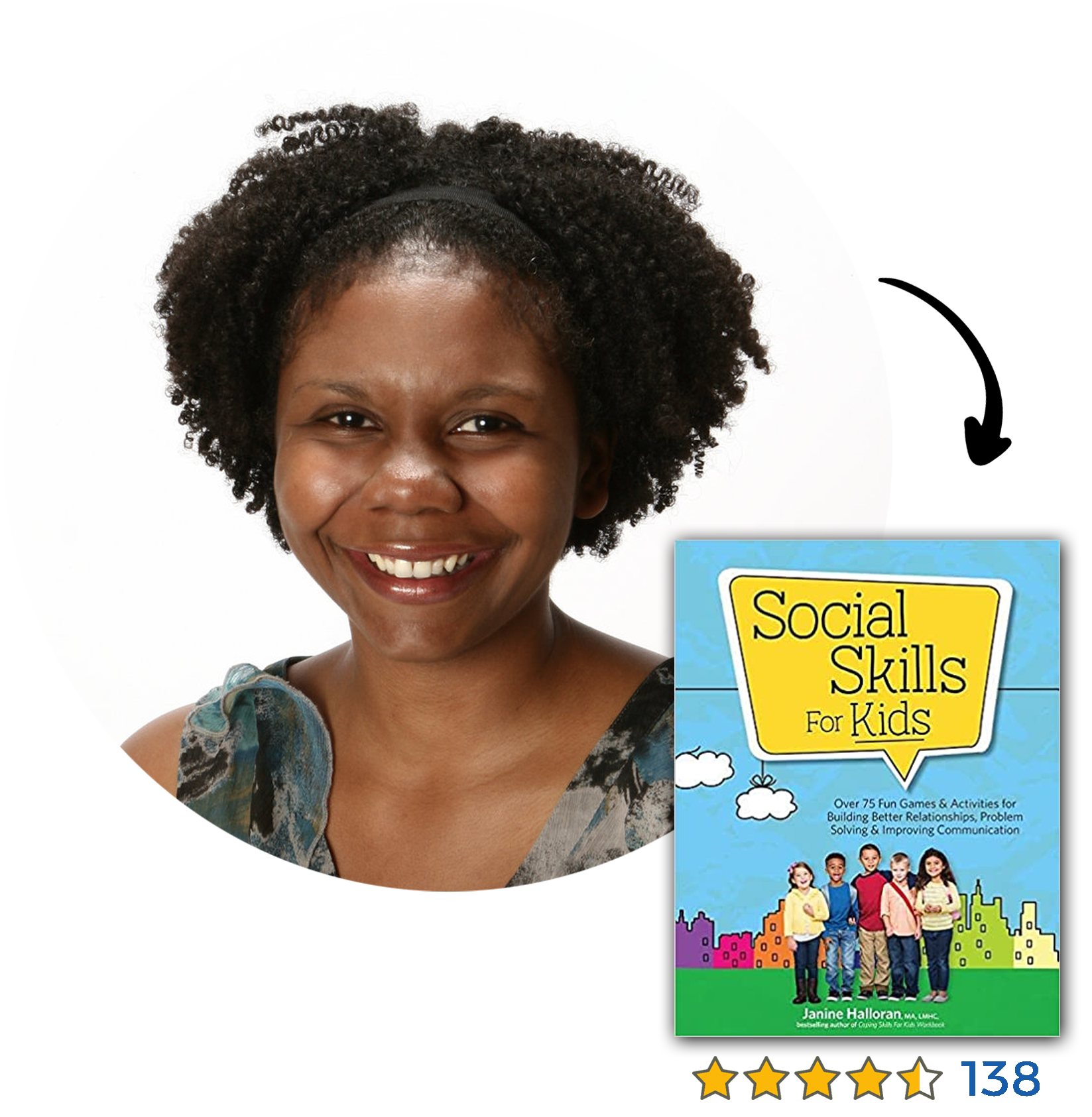 If you’ve been following along with the past few weeks of mini-series articles to prepare for the 2022 Positive Parenting Conference at AFineParent.com, then you have probably felt the energy leap off your screen! The conference literally has something for everyone, regardless of what your family structure looks like, whom you are parenting with, and how many children you may have.
If you’ve been following along with the past few weeks of mini-series articles to prepare for the 2022 Positive Parenting Conference at AFineParent.com, then you have probably felt the energy leap off your screen! The conference literally has something for everyone, regardless of what your family structure looks like, whom you are parenting with, and how many children you may have.
Take, for example, our next highlighted masterclass expert, Janine Halloran. As the Editor-in-Chief and a writer for AFineParent.com, I was so excited to have early access to the Social Skills Masterclass. Janine is a licensed mental health professional who has been working with children and adolescents for 15 years. She is also the author of Social Skills for Kids: Over 75 Fun Games & Activities for Building Better Relationships, Problem Solving & Improving Communication, which was the inspiration for this masterclass.
Janine makes the immediate point that all children have different innate levels of social awareness, with some having much more natural social skills than others. As a parent of three very socially different children, this was a relief to hear. Although I am a behavior specialist at a special education school by profession, and social skill diversity is not a new topic for me, feeling “okay” with my own children’s diverse social awareness has always been a different story.
My oldest is what Janine would likely consider a socially savvy child. He can walk into a room, read the social cues, and quickly understand what is expected of him. My youngest, on the other hand, struggles with social cues. While he is a social child who loves to play with friends, he needs direct and purposeful instruction of expectations. He often needs help regulating his emotions during play. It is a struggle for him to walk into a room and immediately fall into the expectation simply from observing the social cues.
I loved listening to Janine’s recommendations on how to help our children strengthen their social skills because it is not all about children just “getting along” with others. Janine really breaks down the traits that feed into social skills, with an emphasis on how our children externally interact with others, but also on their internal ability to self-regulate. I’m excited to share with you my top three takeaways from the Social Skills Masterclass!
#1: Being Kind
 My youngest has had to work really hard to keep up with the academic part of kindergarten—another difference between him and his older brother. Learning doesn’t come easily to him, and navigating his unique learning style has made for a tricky first year of school. So, when his teacher told me recently that he had taken a new student by hand, unprompted, and walked him around to show him the classroom, my heart swelled.
My youngest has had to work really hard to keep up with the academic part of kindergarten—another difference between him and his older brother. Learning doesn’t come easily to him, and navigating his unique learning style has made for a tricky first year of school. So, when his teacher told me recently that he had taken a new student by hand, unprompted, and walked him around to show him the classroom, my heart swelled.
Janine believes that kindness is often overlooked within social skills, but she has always believed that kindness is more important than academics and I couldn’t agree more. Teaching our children to be kind goes hand in hand with empathy–which I think we all want to see our kids emulate. Janine stresses that she wants the next generation to be able to see someone else’s perspective and practice kindness across differences.
Janine encourages parents to reinforce and emphasize the good things they see their children do around the house and suggests the idea of a kindness wall to reward kind behavior in a visible way. To create a kindness wall, parents can write their child’s name down, what kind deed they did, and post it on a wall in the home. This is also a great strategy for teachers to try within a classroom or a school. It’s a fun way to highlight good work, good deeds, and being a helper.
I also love that Janine took the kindness wall a step further and suggested that we give our children the power to add to the wall themselves when they see someone else being kind. This gives them the opportunity to work on identifying which kind of actions are kind and practice giving praise and recognition to others.
I’m excited to start a kindness wall in my own house, not only to call out acts of kindness that I see my kids engaged in, but also to allow them to encourage each other to be kind. This could be a great strategy for parents who want to work on sibling relationships and teaching kindness to each other!
#2: Identifying Emotions
 Throughout the many articles that I’ve both written and edited for AFineParent.com, there are several themes that run through almost all parenting topics we tackle, one of which is the importance of validating emotions with our children. I was so excited to hear this extended into Janine’s conversation in this masterclass!
Throughout the many articles that I’ve both written and edited for AFineParent.com, there are several themes that run through almost all parenting topics we tackle, one of which is the importance of validating emotions with our children. I was so excited to hear this extended into Janine’s conversation in this masterclass!
Janine explains that being able to recognize how emotions look is an essential part in a child being able to identify what their own face does when they are experiencing an emotion, but also helpful in understanding what other people’s faces do. This, in turn, translates to being able to read social cues when entering a situation.
Janine recommends utilizing feelings face charts to help with teaching how emotions may look. Parents can find feeling face charts online in a variety of emojis and cartoon faces; however, making a feelings face chart by using pictures of the child may be even more effective. Parents can ask their child to pose with different faces of emotion, take pictures of them, and then have those as a chart on the wall that they can refer back to when they are experiencing an emotion.
Using a mirror is another good way of helping kids identify emotions. They can take a peek at themselves and then match their expression with the picture on their feelings chart. We can encourage our children to practice with a mirror during times in which they are calm and willing, noting what our mouths, cheeks and eyebrows do as our child demonstrates different emotions.
My household has always been big on emotion validation. We often label our own emotions (I feel angry right now) and the emotions we think our kids may be feeling (You look like you are sad right now). For my oldest two children, this tactic works well; labeling the emotion allows us to move toward validating it with assurance. Then we can move on to problem solving for how we can safely and appropriately express that emotion.
For my youngest, however, that process most often falls apart at the first step and we never make it to the part where he can express an emotion appropriately or enter a situation with an accurate read on someone else’s emotions.
After listening to Janine, I realized that my youngest may just need more practice on how the emotion looks, rather than simply labeling it with the assumption he’d make the connection. We worked together to make an emotions chart of our family’s different emotion faces and have been using that as a prompt to help make better connections. Not only was making the chart a fun activity that all the kids loved, but now my son is motivated to seek out a face that most closely matches what he is feeling or what he thinks someone else is feeling. It’s become a great support for validating emotions in our family!
#3: Self-Regulation
 When you first think about social skills, what comes to mind? If you are like most of us, you probably think about the ability to communicate with others, play with others, take turns, or be a team player. While all of those qualities are true, social skills have a basis in something much more internal than external!
When you first think about social skills, what comes to mind? If you are like most of us, you probably think about the ability to communicate with others, play with others, take turns, or be a team player. While all of those qualities are true, social skills have a basis in something much more internal than external!
In order for our children to have the social skills needed to function and be successful in school, with peers, eventually in their chosen profession, and in life as a functioning adult, they must first have the ability to internally regulate. Janine encourages us to think about how we can help our children understand that they have the power of control. They can control how they feel, think, and act which in turn impacts how they interact with others and the responses they get from others during those interactions.
Playing games like freeze dance, red light/green light, or other games where they have to stop and start unexpectedly, can be fun ways to practice self-regulation. Practicing in a playful manner can then translate to real-life play, such as pretend play when children have to take turns or share props and roles. Even when things fall apart, continuing to give our children opportunities to practice skills and then apply them to real play allows for some effective and natural teachable moments.
The beautiful thing about the self-regulation ideas that Janine speaks about is that they tie in so smoothly with some of the activities already mentioned around identifying emotions. In order to self-regulate, the first step has to be identifying their own emotion so that they can sort through strategies that usually work best for that emotion and use those strategies to maintain self-regulation.
Self-regulation is definitely an area that my son struggles with and after listening to Janine and thinking about the connection that this plays in his ability to read social cues, it suddenly makes sense. My son really struggles with regulating his emotions; his ability to self-regulate is often tied into external factors of which he does not have control. For example, I can usually tell when he’s getting sick, when his allergies are bothering him, or when he is tired simply because he struggles harder with social skills which often results in a meltdown.
Janine’s ideas have encouraged me to focus on more purposeful play that can increase my son’s self-regulation skills. There are even a million YouTube options to help with games like freeze dance or red light/green light; and freeze dance is fun because my kids can all join in to dancing to the Encanto soundtrack!
Additionally, for our kids who struggle with self-regulation even more when they are either tired, hungry or not feeling well, we can start working on self-advocacy early! While I know what the signs usually are, I realized that my son does not. I have begun to prompt him through a “self-check” list in those moments, asking him questions such as “Are you hungry?” or “Does something hurt?” with the hope that eventually, he will be able to make this self-assessment, recognize what he needs and self-advocate for it himself.
This masterclass left me with a better understanding of just how impactful social skills are on a child’s life. Lacking these skills can lead to struggles in literally every area of their lives; but we can give our children opportunities to practice these skills in fun and motivating ways! I could have continued to write about the ideas that Janine Halloran had for us in the Social Skills Masterclass (because there were just so many!), but I had to end this somewhere! I hope you will take a peek at the masterclass for yourself when we share it during the conference in May.
 You can watch the full Social Skills Masterclass with Janine Halloran for FREE during the online Positive Parenting Conference between May 17th – 24th, 2022. Each year 100,000+ parents join us for this amazing online event. Don’t miss it!
You can watch the full Social Skills Masterclass with Janine Halloran for FREE during the online Positive Parenting Conference between May 17th – 24th, 2022. Each year 100,000+ parents join us for this amazing online event. Don’t miss it!
Up Next…
Have you ever wondered if your children listen to anything you say? Finding ways to build connections with our children that translate to effective communication (and their willingness to listen) can be overwhelming!
Join us next week as we discuss key takeaways from the Communication Tools Masterclass with Julie King.
This laid-back masterclass is overflowing with insightful knowledge about the importance of connection-building in parenting and is guaranteed to leave you with new ideas for communicating effectively with your child. See you next week!
Thank you so very much for sharing this post, Leah!